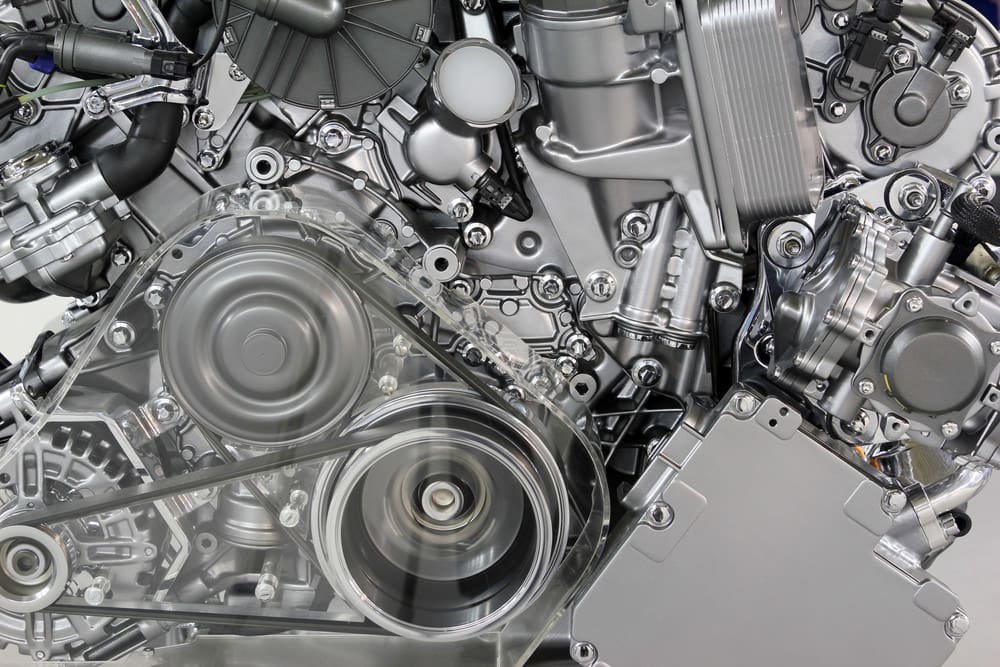

Even back in the "olden days," combustion engines utilized belts and pulleys to power components like water pumps or air conditioning systems. Although technology has improved, belts continue to be a vital component on most cars, trucks and SUVs. Although each vehicle has a unique belt-driven system designed for different engines and configurations, there are generally two types of belts: accessory or serpentine belts, and timing belts.
The accessory belt, which is located on the front of the engine, is an important part that controls many different function of the vehicle. It may also be called the serpentine belt, which is a much more mysterious sounding name but means the same thing. The reason for its name is that it wraps around different pulleys much like a snake; hence the term serpentine. This belt operates multiple accessory items such as the water pump, radiator fan, alternator, and air conditioning system.
The timing belt is installed underneath a cover on the motor, and is designed to operate the crankshaft or camshaft, which controls the timing of all internal engine components like the pistons and valves. For purposes of this article, we'll focus on the serpentine belt.
How the Serpentine Belt Works
This single belt replaces the multiple belt system that was once seen on engines. Older models had one belt for each accessory. The problem was that if one belt broke, you'd have to remove all of them in order to replace the bad one. This not only took extensive time to complete, but often cost consumers a lot of money to pay a mechanic to complete the service.
The serpentine belt was designed to solve these problems. The serpentine or accessory belt controls all of these components. It is driven by the crankshaft pulley and weaves in and out of different accessory system pulleys. Some vehicles may have a special belt for certain accessories, but for the most part, one belt does many jobs. This reduces the amount of labor needed to replace a broken belt and also reduces drag on the motor. The end result is a more efficient system that maintains smooth operation of all belt-driven components.
How Long Does a Serpentine Belt Last?
The serpentine belt is used every time the engine runs, and this constant operation puts a lot of wear and tear on it. Like any other rubber component in an engine bay, it is subjected to high heat and thus will wear out over time. The lifespan of the serpentine belt will depend mostly on the type of material it’s made of. Older style belts generally last about 50,000 miles, while those made from EPDM can last up to 100,000 miles.
The best option is to ensure that your car receives regular maintenance, and that the belt is inspected every time you have your engine oil and filter replaced. It's also a good idea to have the belt and pulleys inspected during any radiator or cooling system service. If it breaks, you’ll find that your driving experience is more than a little bit changed. Without this belt, your power steering pump won’t work, your air conditioning system won’t work, and alternator won’t operate. The car can also overheat since the water pump will not function, which can quickly lead to engine damage.
Anytime you have the serpentine belt replaced, it is recommended to also have the pulleys and tensioner replaced at the same time. This is a service that a professionally trained mechanic should complete, so contact a local mobile mechanic to replace your serpentine belt as recommended by your manufacturer.



